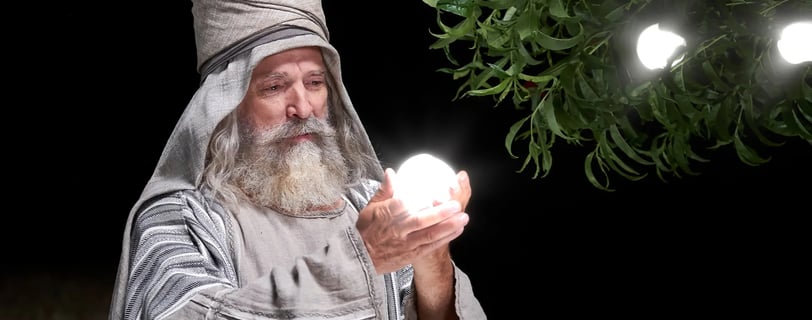He Beheld Not The Filthiness
How to follow Lehi's example by not beholding the filthiness of the world
TREE OF LIFE
Hyrum Miller


1 Nephi 15:27 reads “And I said unto them that the water which my father saw was filthiness; and so much was his mind swallowed up in other things that he beheld not the filthiness of the water.” In 1 Nephi 8:13, Lehi sees the water but he doesn’t notice how filthy it is because he doesn’t dwell upon it. He optimistically turns his attention to the tree, the fruit, and his family. Among many other negative attributes, the world is full of doubt, fear, wickedness, pride, pessimism and cynicism. These things make up the filthy water that fill the worldly “gulf, which separated the wicked from the tree of life” and is “a representation of that awful hell” (1 Nephi 15:29).
How was it possible that Lehi “beheld not the filthiness of the water” (1 Nephi 15:27) even though he “beheld [the] river of water” (1 Nephi 8:13)? How was he able to live in the world but not be tainted by its filthy effects? The answer is that “his mind [was] swallowed up in other things” (1 Nephi 15:27).
What were those “other things” that Lehi’s mind was swallowed up in? In 1 Nephi 8, we learn that his thoughts were rooted in the tree which he beheld. Stemming from his beholding of the tree include his beholding and partaking of the fruit of the tree. Also included is his desire to share the fruit and his subsequent words and actions to reach out to his family.
In 1 Nephi 11:22 we learn that the tree represents the love of God. Elder Bednar expounds upon this by stating that “the greatest manifestation of God’s love for His children is the mortal ministry, atoning sacrifice, and Resurrection of the Lord Jesus Christ. The fruit on the tree can be considered a symbol for the blessings of the Savior’s Atonement. Lehi’s instant response to partaking of the fruit of the tree and experiencing great joy was an increased desire to share with and serve his family. Thus, as he turned to Christ, he also turned outward in love and service.” (“Come and See”, David A. Bednar, General Conference Oct. 2014).
I find it interesting to compare Lehi’s partaking of the fruit of the tree with our partaking of the sacrament. “As we partake of the sacramental bread and water each week, we would do well to consider how fully and completely we must incorporate His character and the pattern of His sinless life into our life and being” (“The Living Bread Which Came Down From Heaven”, D. Todd Christofferson, General Conference Oct. 2017).
Elder Bednar teaches that the character of Christ is to “reach outward” (“The Character of Christ”, David A. Bednar, BYU-I Religion Symposium Jan. 2003). As Lehi partook of the blessings of the Atonement of Jesus Christ, his nature was changed and he reached outward toward his family in the character of Christ.
Too often we find ourselves focusing on the “filthiness of the water”. The “more excellent way,” however, is to focus on our Savior Jesus Christ, partake of the blessings of His Atonement, and reach out to others to help them come unto Christ (Ether 12:11).
Subscribe to my newsletter
Any opinions expressed or implied on this site are solely those of Hyrum Miller and not those of The Church of Jesus Christ of Latter-day Saints.
Your feedback is very valuable to me! Please email me at hyrum@receivethesavior.com
